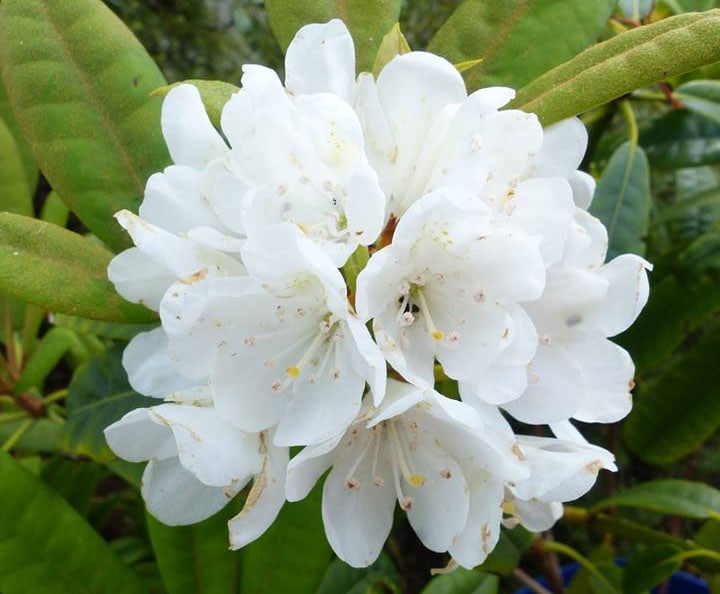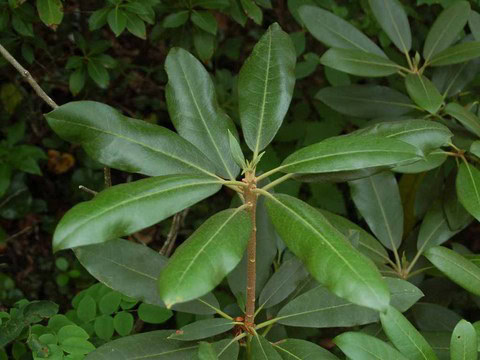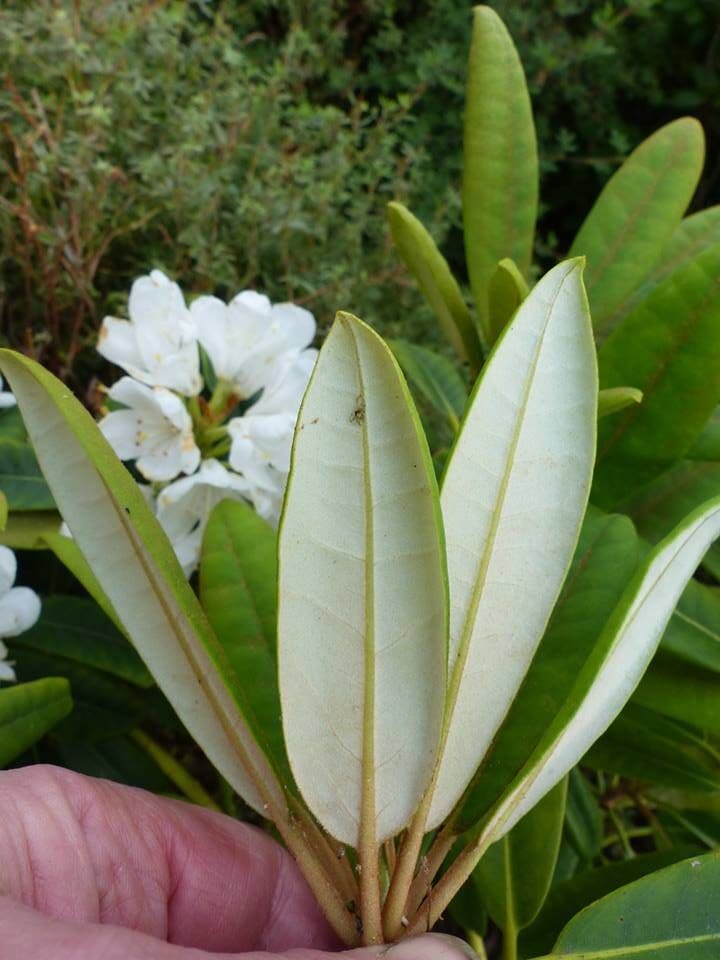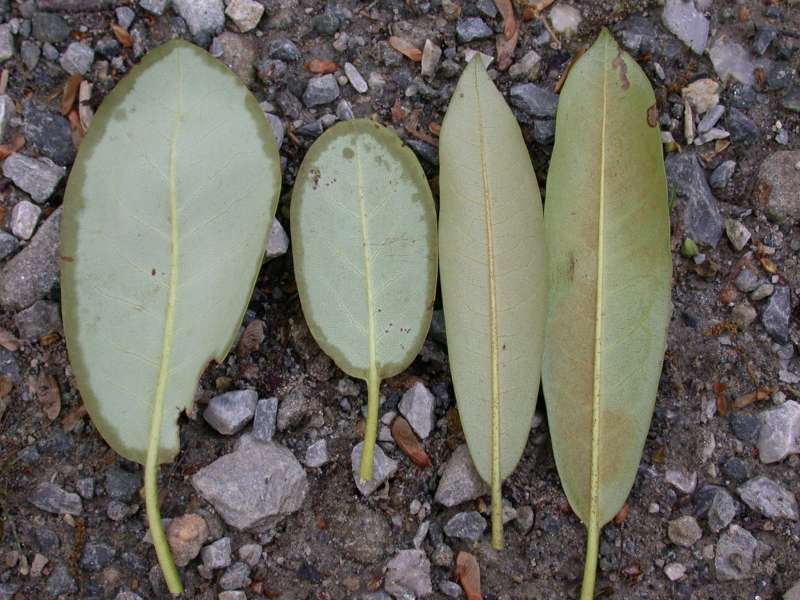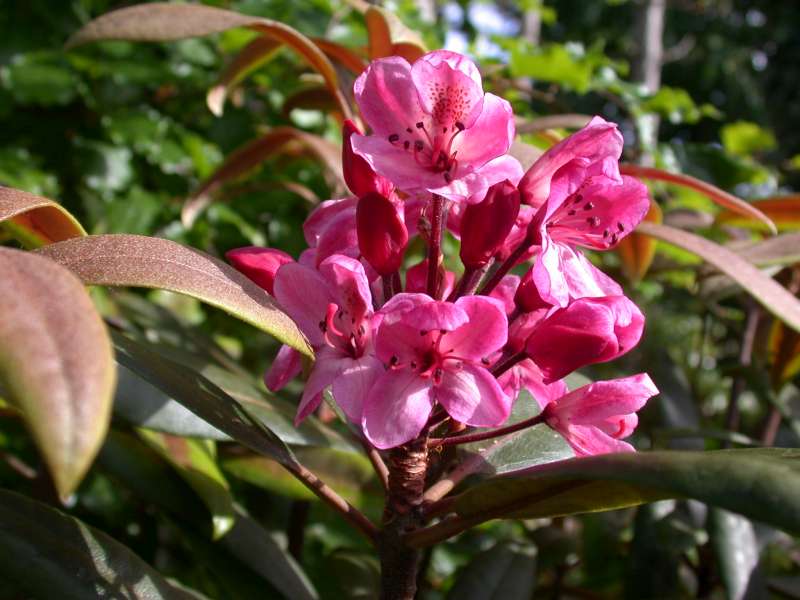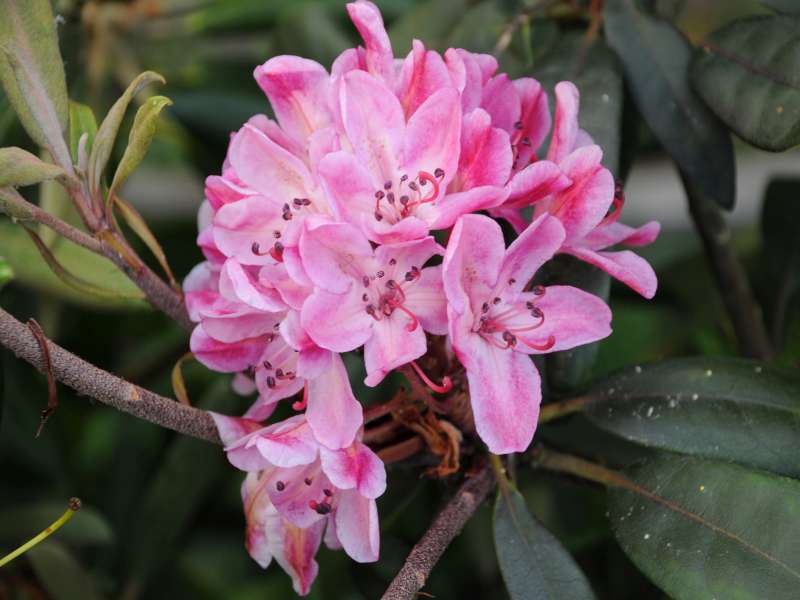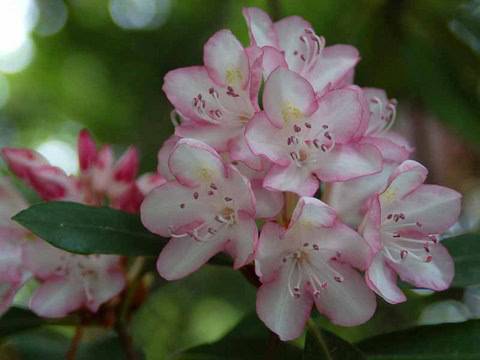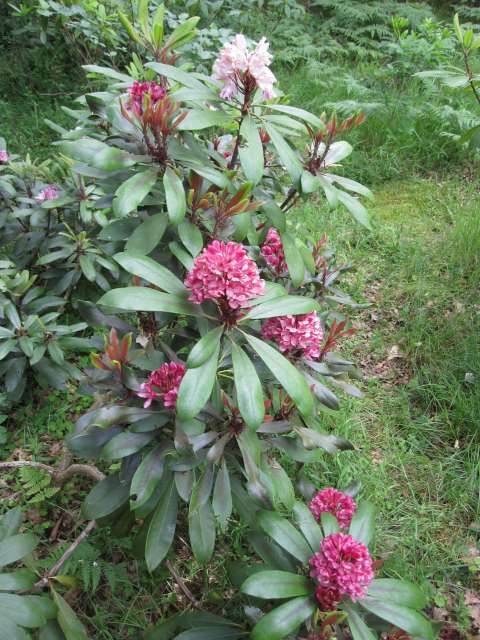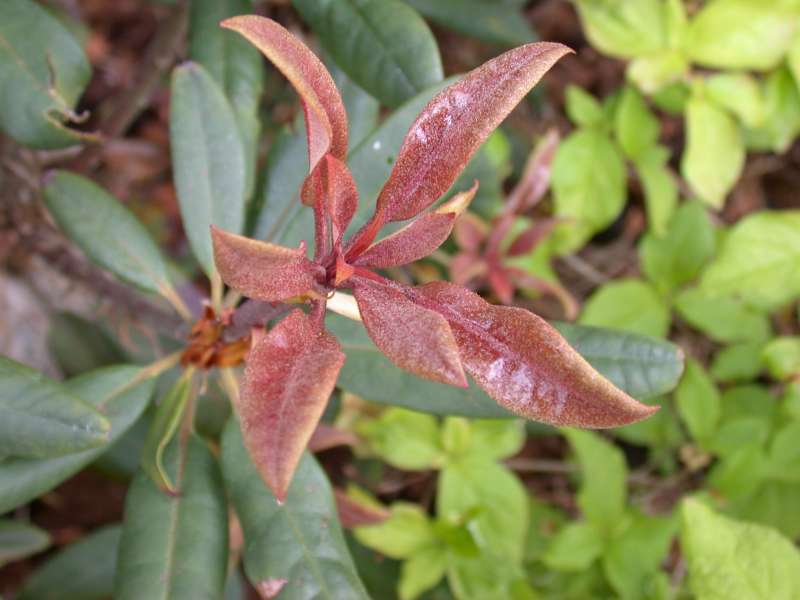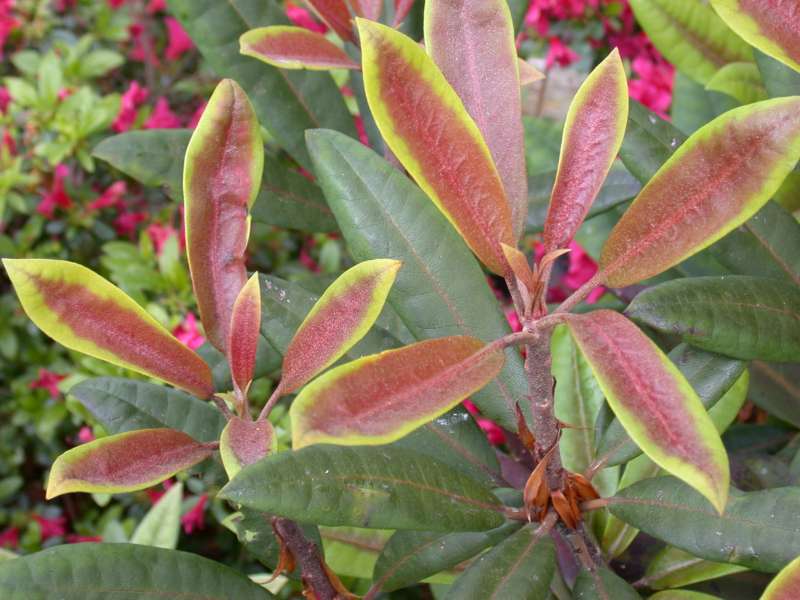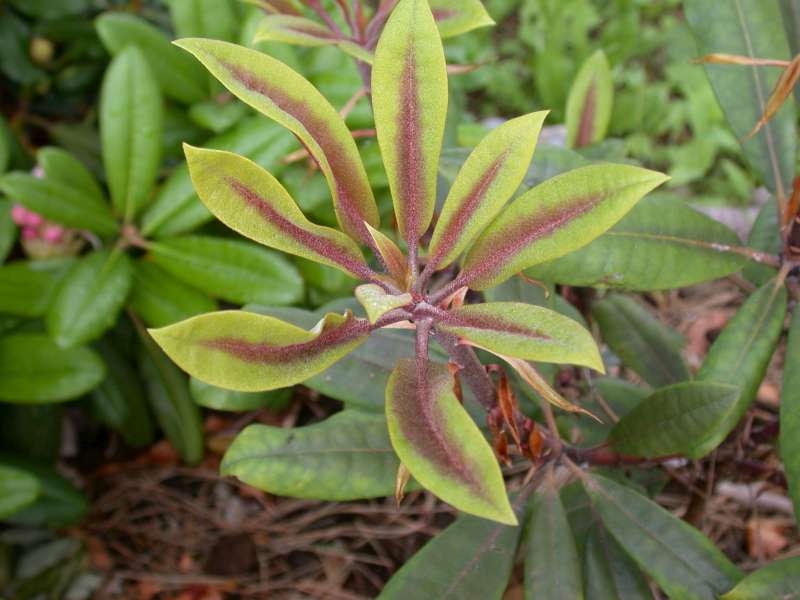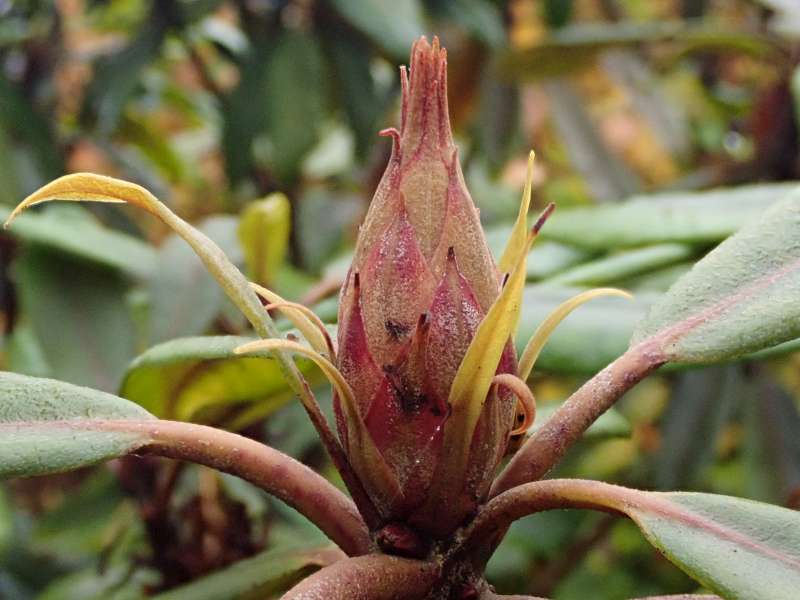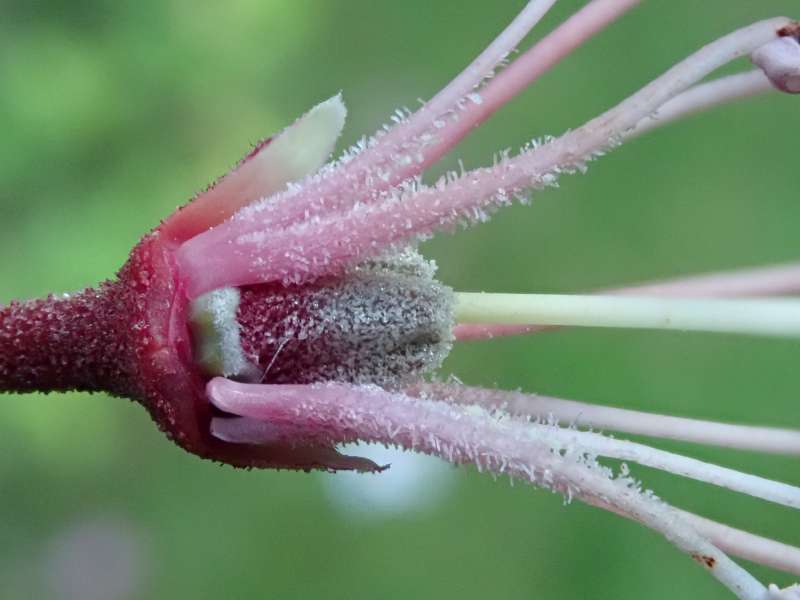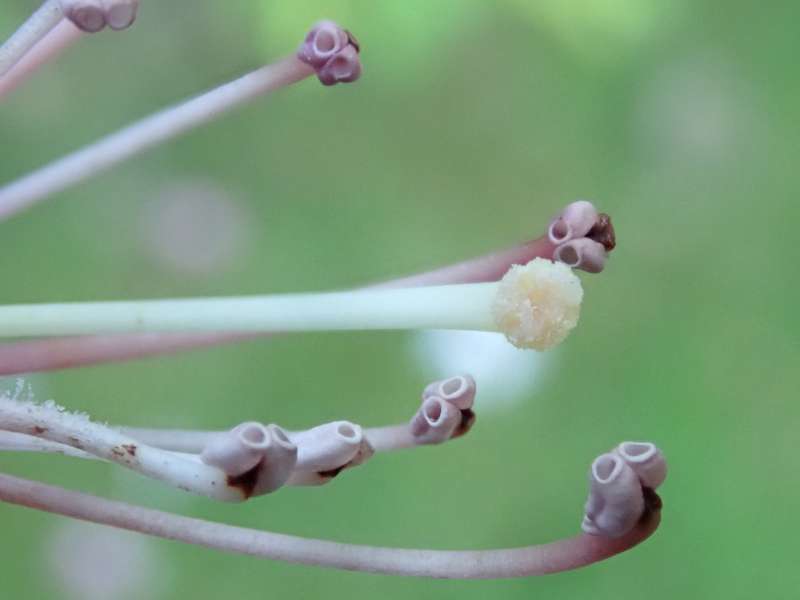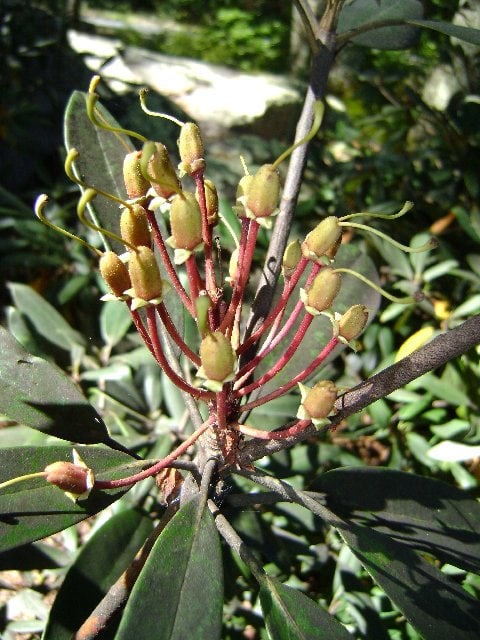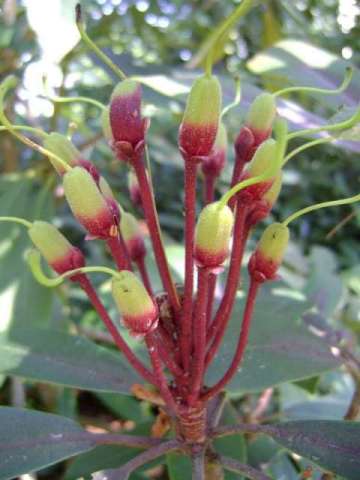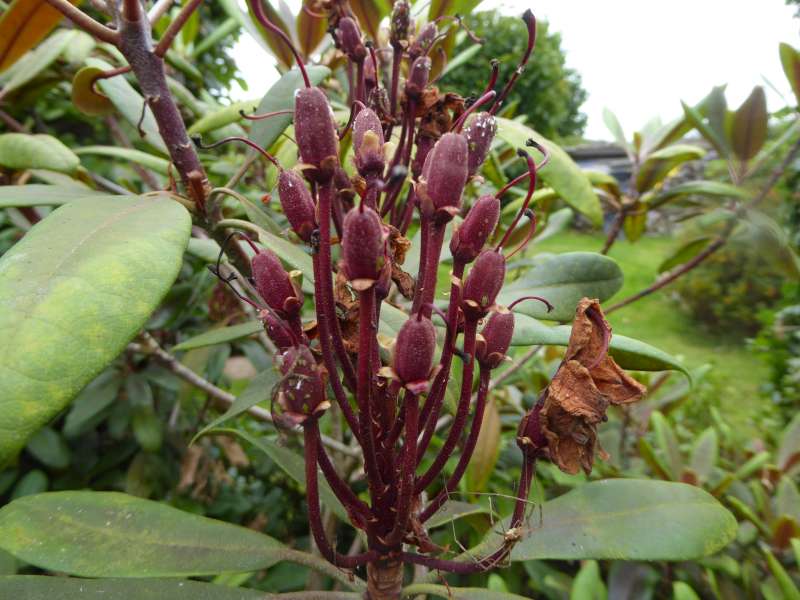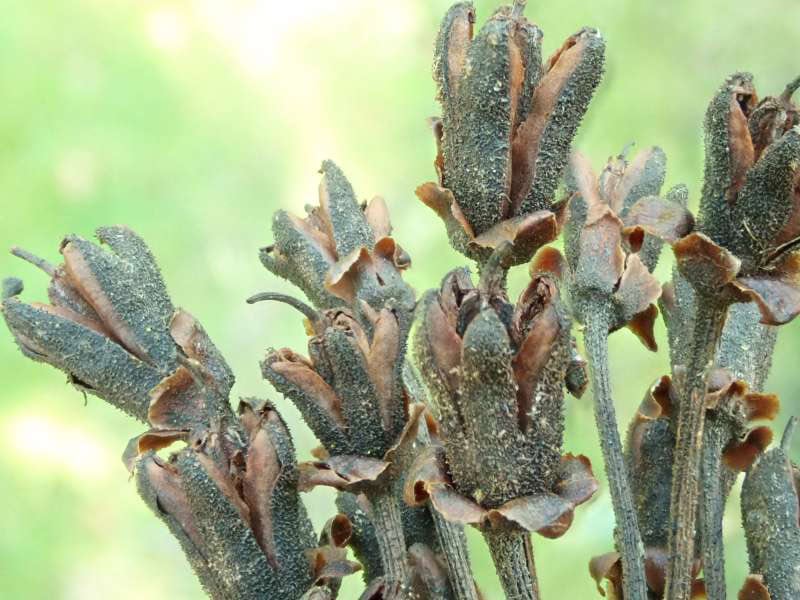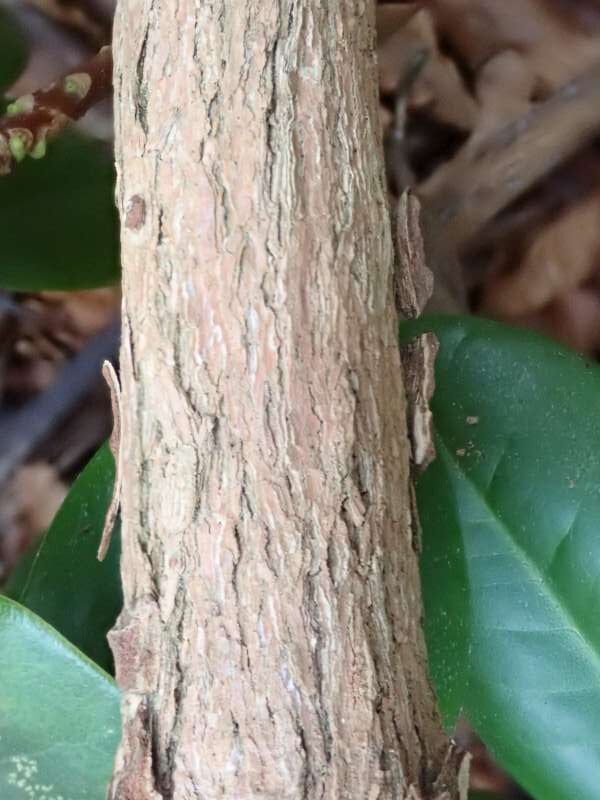Rhododendron maximum
Billeder af Rhododendron maximum
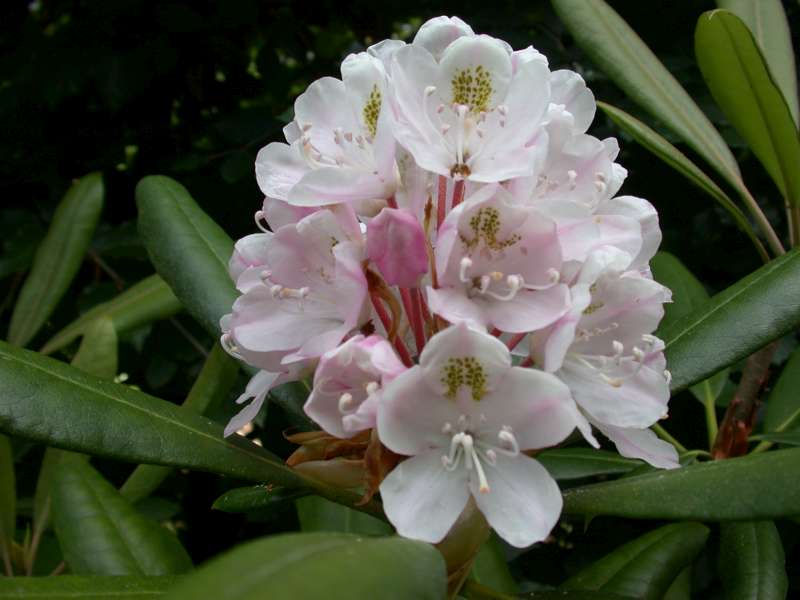
Beskrivelse
R. maximum (Pontica) Store stedsegrønne buske eller små træer som blomstrer i juli med hvide til lyserøde, rosa-lilla eller sjældent rent hvide blomster, som regel med grønlige pletter. Bladene kan være op til en 30 cm i længden og er dækket med et hvidligt indument ved udspring. Er kulde, varme og skygge resistente, men bryder sig ikke om vind. Vokser i løvskov og nåleskov fra 300-1700 m i Nova Scotia, Canada syd til staterne Georgia og Alabama i USA. En sjælden sport-mutation er fundet på Mt. Mitchell som viser sig ved at have rødt pigment i flere eller færre af cellerne og som kan give både hvide og dybrøde blomsterstande på samme plante. Ved Mt. Mitchell er der også variationer i arten og planter med store blade, med lyserøde blomster og røde rande (picotee) er fundet her af Donald Hyatt. R. maximum kan let bestøver sig selv allerede i ballonstadiet. Kan ellers være svær at lave HP frø på.
Hans Eiberg
Andre former end Mt. Mitchell: ‘Leachii’ har kompakt vækst, med bølget bladkant og runde blomsterknopper. ‘Picotee’, ‘Ashleyi’, ‘Great Laurel’, ‘Harkness’, ‘Marginatum’, ‘Nassau Red’, ‘Rosebay’, ‘Summertime’ R. maximum yellow form: Green Bank, Pocahontas County West Virginia June 1937, Maurice Brooks. Smalle blade (Mike Creel)
● R. maximum frø. Foto: Hans Eiberg
ARS
Flora of North America
RBGE Herbarium; R. maximum
Curtis Creek, Red max pictures
Don Hyatt article om R. maximum og R. catawbiense
More Info
Red R. maximum phenotype
It is a genetic error and a mitochondrial inheritance. A mosaic here, because more than two different cell lines exist. (1) red trusses and (2) white trusses and normal green leaves (3). The red color is only transmitted throw the mother (Joe Bruso).
I don’t belive the trait is caused by jumping genes (like yellow stripes in leaves) or chimera. It is not a dynamic mutation like the mutation in Huntingson and myotonic dystrophy diseases (very long trinucleotid repeat). Many proteins make and stabilized this chromosome loop and it works as a switch that can be opened more or less depending of the tissure it works in. Just like the switch regulating of pigment production for brown eye color and for milk tolerance in man. Different cells (mosaism) have the switch more or less open depending of how it is packed with transcription factors and other proteins.
I don’ think it is imprinting (one of the two genes on a locus is inactivated by methylation) so the offsprings looks different depending of the mother or father are the red form (close to mitochondrial inheritance, but not all offsprings got the trait).
Hans Eiberg

